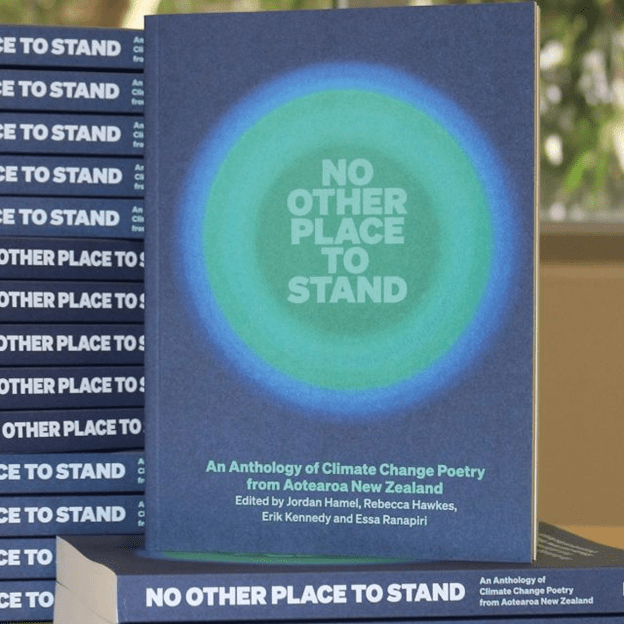BOOK REVIEW
No Other Place to Stand

No Other Place to Stand
Editors: Jordan Hamel, Rebecca Hawkes, Erik Kennedy, Essa Ranapiri
Published by Auckland University Press
ISBN: 978-1-86940-955-5
$30
Paperback
Published 2022
Reviewer: Isaac Thomas
This collection opens by asking what use poetry is in the face of an issue like climate change, one that requires so much more than words to begin to put right. The slightly uncomfortable answer seems to veer between the idea that words can inspire and educate, and that they’re better than nothing. In any case, this book will be useful for teachers, climate change being a topic more and more of us are looking to address in our classes. Also, by the reckoning of the editors over 50% of the poets featured are Indigenous writers, which makes this worth checking out as many teachers are rightly questioning just how very white the popular canon of teachable poetry is.
As with any anthology, there are some pieces that don’t hit the mark, but with over a hundred poems by 91 poets, everyone is going to find something to their tastes, and multiple pieces they’ll be able to use in their programmes. “The Uprising” by Dinah Hawkens is going straight into my junior poetry unit for its good examples of simile, metaphor, and listing, and the moment I read Stevie Davis-Tana’s excellent “Daughters of the Land”, I started thinking about which senior class I could give it to.
There were many pieces in this that I loved, but wouldn’t necessarily teach. There were more that I might use in class, with “but”s. Te Kahu Rolleston’s eminently teachable “The Rena” would require context work on the eponymous shipwreck that happened when most of our seniors were only a few years old. Similarly, I would love to do something with Jessie Fenton’s sublimely titled “In 2006, Disney Channel released a crossover episode called ‘That’s So Suite Life of Hannah Montana’ and I don’t know if I’ve felt real joy since”, but – as you can tell – it centres around Millennial-specific pop-culture references that I might struggle to make relevant to students who were born the year that show aired.
It’s worth getting a copy of this book and passing it around your department; the wide variety of styles and subjects mean that no matter what they’re looking for, everyone will come away with at least a few pieces they’re excited about.


